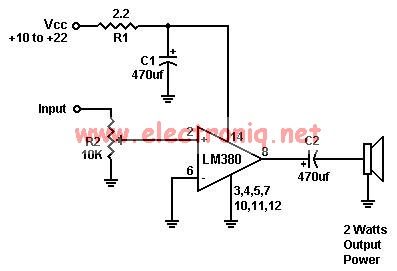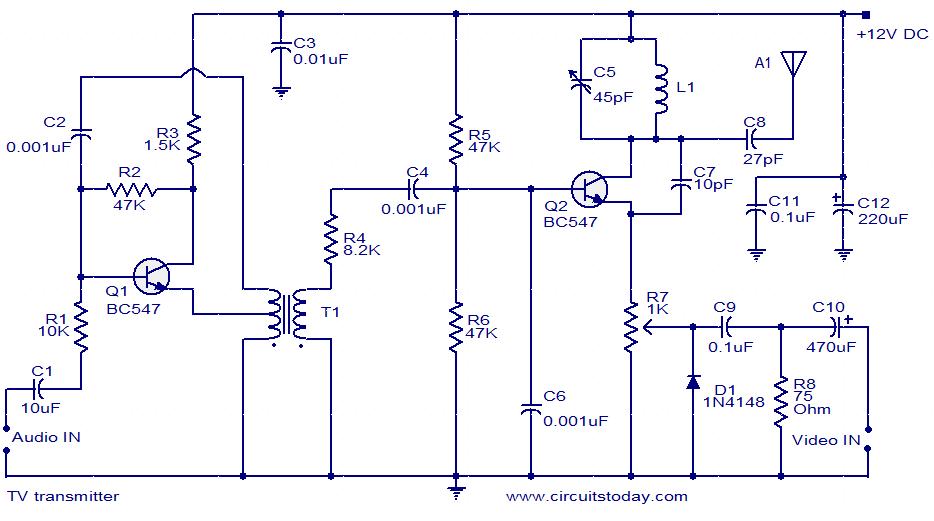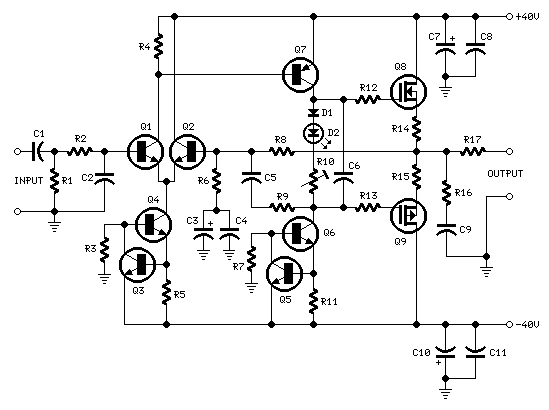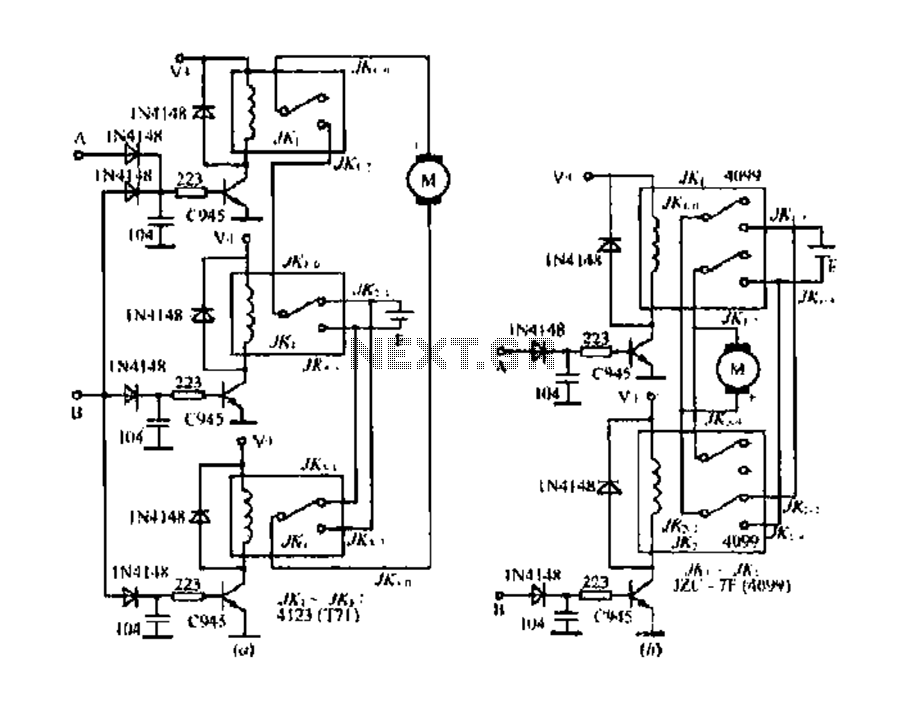
LM380 audio amplifier electronic project circuit design

A simple audio amplifier can be designed using the LM380 along with a few external components. This amplifier features a wide supply voltage range, an input impedance of 150 kΩ, low distortion, and a current capability of 1.3 A.
The LM380 is a power audio amplifier capable of delivering up to 14 watts of output power, making it suitable for various audio applications. The device operates within a supply voltage range of 14 to 38 volts, allowing flexibility in design based on the power supply available.
To construct the amplifier, a typical configuration includes the LM380 IC, which requires a few passive components such as resistors and capacitors. The input stage can be designed to provide a high input impedance of 150 kΩ, which minimizes loading on the preceding audio source and ensures minimal signal loss.
The amplifier circuit typically includes feedback resistors that determine gain and stability. By selecting appropriate resistor values, the gain can be adjusted to meet specific application requirements while maintaining low distortion levels, which is crucial for high-fidelity audio reproduction.
Additionally, the output stage of the LM380 provides a current capability of 1.3 A, allowing it to drive speakers directly without the need for additional driver stages. This feature is particularly useful in portable or compact audio systems where space and power efficiency are critical.
Thermal management is also an essential consideration when designing with the LM380. The IC may require a heat sink to dissipate heat generated during operation, especially when driving higher output levels. Proper layout and component selection can enhance performance and reliability, ensuring that the amplifier operates efficiently under various conditions.
In summary, the LM380 audio amplifier design is straightforward yet versatile, capable of delivering quality audio output with minimal distortion and a robust current supply, making it an excellent choice for both hobbyists and professional applications.Using LM380 and few external components can be designed a simple audio amplifier that has many features like : wide supply voltage range, 150k © input impedance, low distortion, 1. 3A current capability. 🔗 External reference
The LM380 is a power audio amplifier capable of delivering up to 14 watts of output power, making it suitable for various audio applications. The device operates within a supply voltage range of 14 to 38 volts, allowing flexibility in design based on the power supply available.
To construct the amplifier, a typical configuration includes the LM380 IC, which requires a few passive components such as resistors and capacitors. The input stage can be designed to provide a high input impedance of 150 kΩ, which minimizes loading on the preceding audio source and ensures minimal signal loss.
The amplifier circuit typically includes feedback resistors that determine gain and stability. By selecting appropriate resistor values, the gain can be adjusted to meet specific application requirements while maintaining low distortion levels, which is crucial for high-fidelity audio reproduction.
Additionally, the output stage of the LM380 provides a current capability of 1.3 A, allowing it to drive speakers directly without the need for additional driver stages. This feature is particularly useful in portable or compact audio systems where space and power efficiency are critical.
Thermal management is also an essential consideration when designing with the LM380. The IC may require a heat sink to dissipate heat generated during operation, especially when driving higher output levels. Proper layout and component selection can enhance performance and reliability, ensuring that the amplifier operates efficiently under various conditions.
In summary, the LM380 audio amplifier design is straightforward yet versatile, capable of delivering quality audio output with minimal distortion and a robust current supply, making it an excellent choice for both hobbyists and professional applications.Using LM380 and few external components can be designed a simple audio amplifier that has many features like : wide supply voltage range, 150k © input impedance, low distortion, 1. 3A current capability. 🔗 External reference





